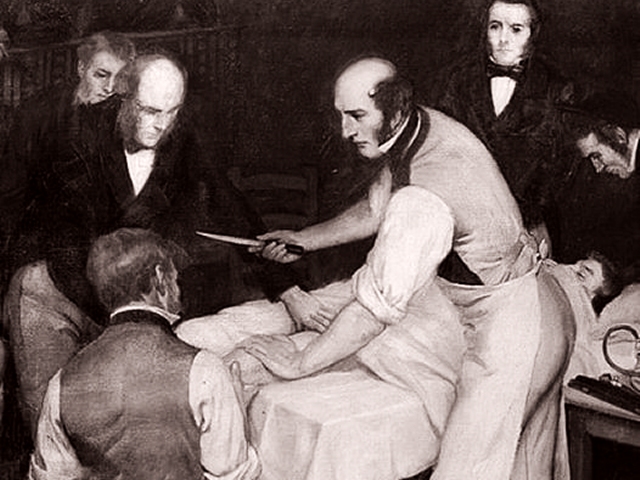Since the ejection of Adam and Eve from paradise, the history of mankind has been repeatedly overshadowed by mischief. The world of medicine is no exception, and some of its representatives have caused the most bizarre medical disasters and scandals.
Robert Liston (1794-1847) was a Scottish surgeon known for amputating his patients’ legs with incredible speed. Gazettes of the time report that he took less than 25 seconds to sever various limbs. However, he whirled around like a fury with his knife, so that sometimes the fingers of his assistant were lost in the process. O-Ton Liston: “One sends me a new assistant… What should I do with an assistant without fingers…!”
In this case, both the patient and his assistant died a short time later from gangrene, or tissue necrosis – the death of tissue due to a prolonged disturbance of blood flow. A physician who had participated in the operation as a spectator also passed away. He died of a heart attack when Liston accidentally, but harmlessly, scratched him. This is probably the only documented operation with a mortality rate of 300 percent.
A later colleague, the British surgeon Richard Gordon described Liston as follows: “He was one-eighty tall and operated in a green coat. He wore rubber boots and jumped over the blood-stained boards onto his strapped, fainting, and sweating patients like a duelist, shouting, ‘Time me gentlemen, time me…!”
Many operations, especially around universities, took place in public so that doctors and spectators could watch what was happening. Students in the galleries stopped the duration of amputations with their pocket watches. Many of them affirmed that after the first flash of the knife, the sawing of the bone was heard immediately. To keep both hands free, Liston usually held the bloody knives between his teeth.
Richard Gordon’s book, “Great Medical Disasters,” published in 1983, describes some of Liston’s surgical procedures:
“Removal in 4 minutes of a 45-pound scrotal tumor whose owner had to carry it around in a wheelbarrow.”
“In a kind of bloodlust, he (Liston) amputated not only the patient’s testicle but also a leg.”
However, one must not forget in the macabre historical descriptions that before the introduction of anesthesia, operations generally had to be performed very quickly, if only to make patients suffer as little as possible. Liston also introduced many new instruments, some of which are still used today in modern form: For example, he invented an arterial forceps (called bulldog forceps) or a leg splint that effectively helps with fractures and dislocations. Liston’s amputation knife is named after him.
In 1846, Liston performed the first operation with modern anesthesia in Europe. During a transfemoral amputation in London, he was one of the first surgeons to use the newly developed ether anesthesia.
In 1818 Robert Liston became a lecturer in anatomy and surgery at the Edinburgh School of Medicine, in 1827 surgeon at the Royal Infirmary, and in 1835 (until his death in 1847) professor of clinical surgery at University College London. As early as 1816, he was knighted Grand Cross of the Order of the Bath (GCB).
This anecdote should prove that not everything was better in the past. Especially not in medicine. Today, surgical interventions take place in absolutely clean, sterile and, above all, non-public operating rooms, performed by proven experts who neither want to set records nor see themselves as showmen. With minimally invasive procedures, even complex operations can be performed as gently as possible – no comparison to the rude methods of the 18th and early 19th centuries.

